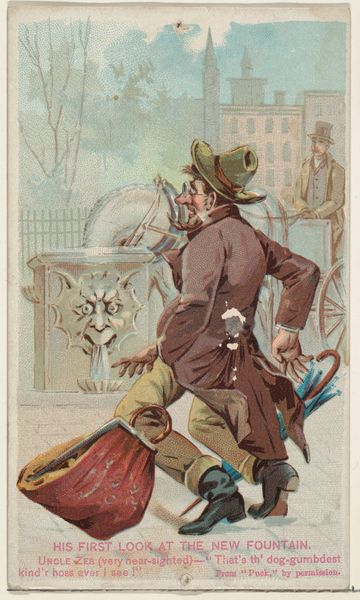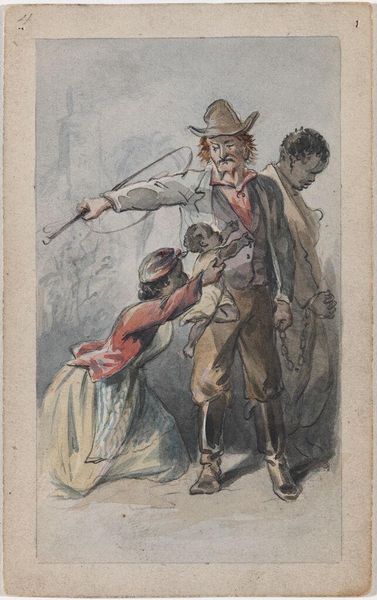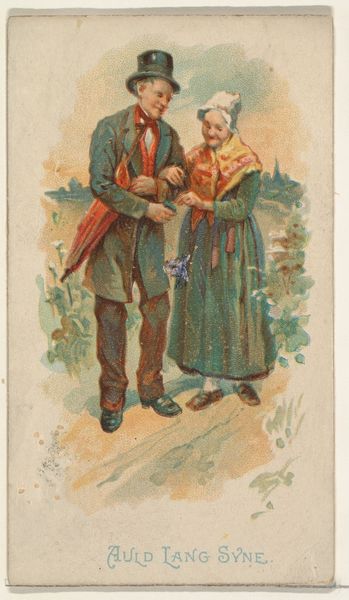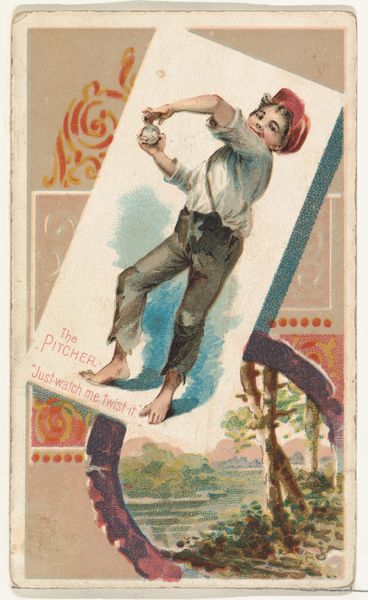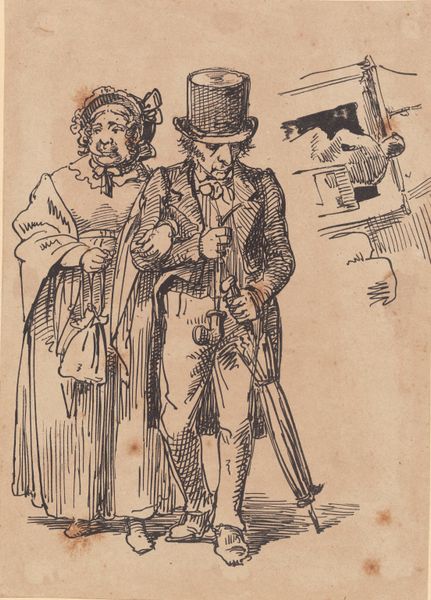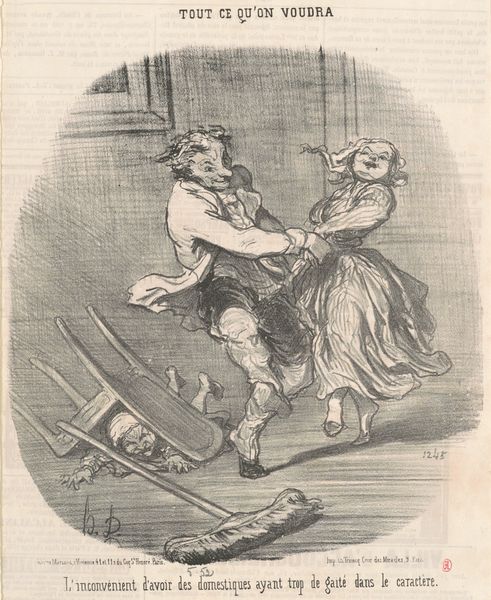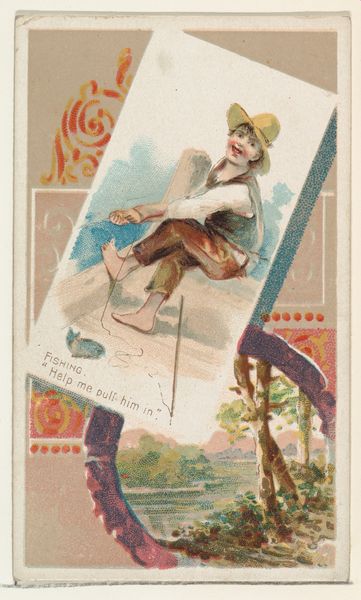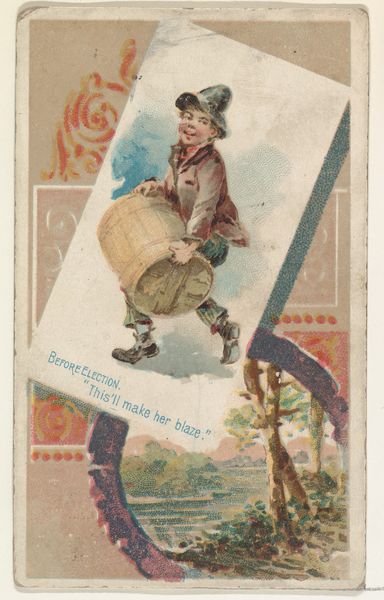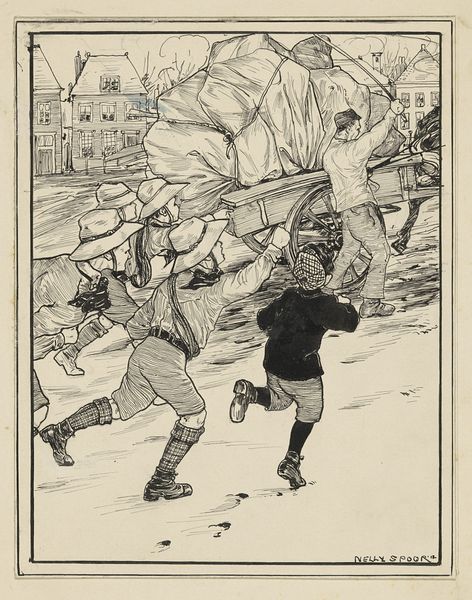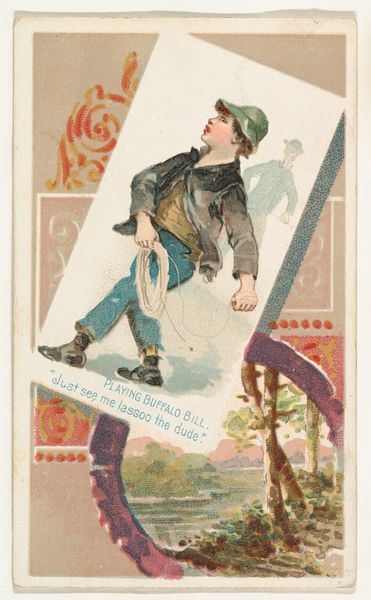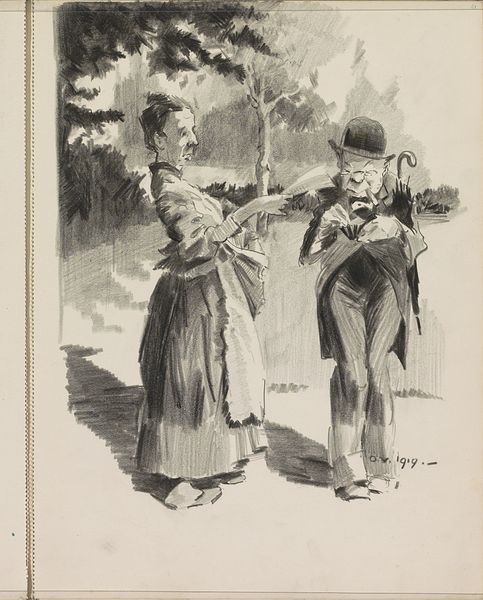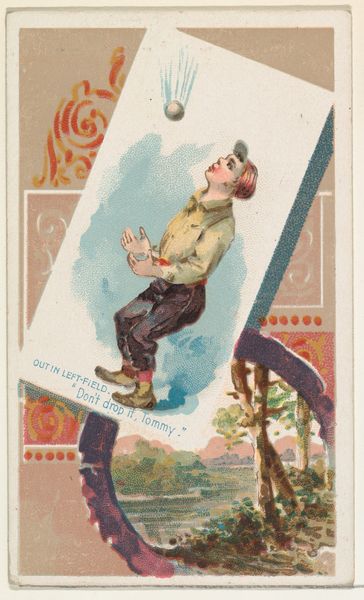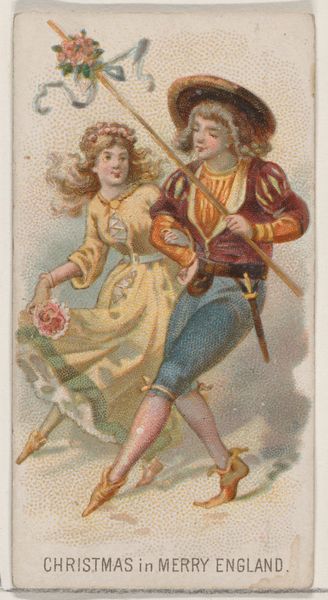
On the Bridge, from the Snapshots from "Puck" series (N128) issued by Duke Sons & Co. to promote Honest Long Cut Tobacco 1888
0:00
0:00
drawing, coloured-pencil, print
#
drawing
#
coloured-pencil
#
water colours
# print
#
impressionism
#
coloured pencil
#
genre-painting
Dimensions: Sheet: 4 3/16 × 2 1/2 in. (10.6 × 6.4 cm)
Copyright: Public Domain
Curator: This is a fascinating print from 1888 entitled "On the Bridge," a snapshot from the series "Snapshots from 'Puck'" by W. Duke, Sons & Co. The piece employs coloured pencil, demonstrating a commercial application of art for tobacco promotion. It resides here at the Metropolitan Museum of Art. Editor: Immediately, I see a caricature brimming with the anxiety of late 19th-century urban expansion and a class disparity made manifest. The color palette strikes a somber mood despite the liveliness of the impressionistic rendering, which suggests rapid change. Curator: Indeed. These promotional cards provide a lens into the cultural milieu, demonstrating how industry leveraged art to promote a lifestyle, with the print process emphasizing mass production for a burgeoning consumer base. Consider also the inherent class commentary present. Editor: Absolutely. We have what appears to be an older, likely working-class man warning a younger woman, possibly his daughter, about infrastructure failings— a symbolic reading of societal cracks is unavoidable. The fact that it's printed to advertise tobacco underscores the dependence on vice within the lived realities of urban life during that period. Curator: Precisely. We must look at the material conditions that permitted its existence—a rising middle class with disposable income, an expanding printing industry, and, of course, the culture of tobacco use which generated the profits in the first place. The production cycle, from raw material to advertisement, implicates labor and power. Editor: The bridge, a metaphor for connection and progress, is instead a source of anxiety for the working classes, a visual indictment against the failures of industrial progress. Moreover, the presence of "Julia" indicates societal shifts, the emerging role of women and their access to these changing landscapes. Curator: Considering Duke Sons & Co's target audience, we also see that they are appealing to notions of family. It also presents a sort of commentary on progress, as its success came to depend on infrastructure which could potentially ‘break down some day.’ The reliance on such precarious infrastructure is striking. Editor: Right, that reliance extends further – how consumption relies on so many invisible labours, but also that progress becomes tied to things like consumerism or tobacco, even as the image suggests those small supports may not hold the 'beam in the world.' Curator: This artwork offers us insight into how materials, manufacturing, and promotional context shape perception and underscore social divisions. I think we can see this piece is very reflective of industrial shifts as much as anxieties of social class and progress. Editor: I see an artifact that bridges our understanding of commercialization, class struggle, and gendered experiences within a pivotal moment in industrial America— a challenge to see these snapshots beyond quaint images to complex cultural texts.
Comments
No comments
Be the first to comment and join the conversation on the ultimate creative platform.
